A response to Louise Bogan’s “The Pleasures of Formal Poetry,” excerpted in Lofty Dogmas. (There’s another response here, that gives more of an idea of her piece; it’s not otherwise available online.)
Years ago in college writing workshop a woman said to me in an off-handed manner “well maybe you’ll be a song-writer†during the break after I’d been roundly criticized for using rhyme in a poem. More recently, but still a while back, a songwriter friend accompanied me to an open-mike poetry reading, where he recited his rap-style, cleverly rhymed lyrics to much applause. Still more recently, finally submitting to commands that had first voiced themselves in early childhood, I picked up the guitar and took a songwriting class, the culmination of which was the performance of the one complete song I actually managed to set to music, at a club with other students. The feeling of getting that across, singing the rhymes and strumming the guitar, was rewarding in a way that the performance of one’s poetry seldom is.
There can be no poem without rhyme. To say that ought to be enough, but of course it’s necessary to agree on what rhyme means and how it has come be used. There is no doubt that actual end-rhymes, of the type one uses to great effect in song, are considered the mark of an inferior or unsophisticated poem. The above comment by a class-mate, while possibly meant in the most generous sense possible, was taken by me as a put-down, as much as to say “you don’t have what it takes to write poetry – why don’t you write songs.†I believe many poets would feel the same way. On the other hand, my song-writing friend couldn’t stand going to a poetry reading and seeing the poet read off the page. “Why can’t they at least memorize it?†he would complain. Yet without the mnemonics of rhyme, it is very difficult to memorize a poem of any length.
No poetry without rhyme… I mean this in the sense that Robert Duncan explains in Fictive Certanties: there are many kinds of rhyme and these days we use image-rhyme, logos-rhyme or the rhyming of word-nuance, rhymes of complexes of words and images juxtaposed so as to create synthesis, an effect beyond what’s on the page. I don’t believe that a good poet in any era was completely without these tools, and an analysis of Shakespeare’s sonnets bears this out. But certainly more recent American poets have stretched some of these techniques farther than they ever had gone before in English. Take Pound. One of the most important (perhaps overlooked?) things that Pound managed to do was to bring into his verse the image-based collage form that he found in Chinese poetry. The effect was to strip away much of the wastage that had built up around conventions in formal poetics that had gone unquestioned for the better part of a century.
From this branch of Pound’s poetics alone one finds much of what has been accomplished by Creeley, especially in his early minimalist poetry, and Snyder, especially in terms of his nature poetry. But it is a rhyming of a different order. It may or may not include actual sound-rhyme and seldom has to do with end-rhyme. There is melody, but it springs from a different source and it is for a different purpose. Both source and purpose are so heterogenous from one poem to the next that to go into that here would be to go far afield of what I want to talk about, and that’s rhyme and song.
It has often been said that the printed word gradually released the poem (for better or worse) from the demands of rhyme in just the sense hinted at above – poets no longer needed to memorize their work for repetition and performance, thus there was no need for the periodic return to a fixed melodic element. But I don’t think nearly enough has been done to consider this fact from the opposite point of view. I find it interesting, for example, that Louise Bogan says Murray is “forced to quote a Gilbert stanza†when he wants to give an example of “a rhythmic pattern used in Greek comedy,†as if letters had fallen to such a sad state in England that this mere songwriter was the best of a sorry lot. Bogan also echoes Pound, however, in reminding us that there have been recurring movements in poetry to recover the song – she mentions Rimbaud, but there are comparable examples in every language. One thinks of Goethe scouring the hills for folk songs in his youth. I wonder then if the skill for sophisticated metrics and rhyming has not moved for better or worse further than ever into the realm of songwriting, at least and especially in English. In other words, rather than the traditional movement of folk song into poetry, a reverse evolution of some of the best poets of a time and place turning to song.
Gilbert used his brilliantly witty pen for comic effect, but not all of his lines are merely funny, and one can argue that his “short sharp shock†represents the black undertone of a gay but dying age. Certainly no one in England at that time approached him in terms of the variety and precision of his technique. Pound felt that most of the best writing in his age was being done by writers of prose (“Poetry ought to be at least as interesting as…â€). Then there was the explosion of American folk, soul, and rock music of the 1950s and 60s. At a time when poetry needed to be brought back to song (one might argue) song was already there waiting for poetry. The interest in music as a medium in and of itself, not in combination with the theater or any other art form, had never been higher. Thus an already acclaimed poet like Leonard Cohen began to play the guitar and sing. Bob Dylan (who stored up in his ear a tremendous number of American folk songs) is known as a musician and not (only) a poet. Both of these latter naturally use sound rhyme to a much higher degree than decorum would dictate in a modern American poem. Yet the best of their lyrics work well on the page, too.
Given the materials that he or she does and doesn’t have to work with, it seems natural, if at times lamentable, that the American poet would go so far from song. For one thing, a musical instrument imposes order and condensing on the line in a totally different way than the blank page or even one’s gesture or breath does. Where one might have previously heard at least the echo of the musical instrument when sitting down to write, now we talk about different melodies, perhaps tied to the rhythms of speech or inherent in the object itself. I don’t take it, for example, that Creeley’s desire for “the anonymity of any song†means a literal desire to write songs in the traditional sense. Otherwise he could have easily done that, one eye or not. We are looking for something apart from song, but equal to it in a different sense, because the songwriters are already out there, doing their job. It would be nice if we could agree on what that is, but perhaps more interesting if we don’t.


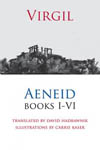
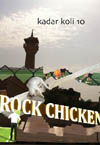
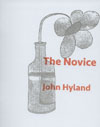


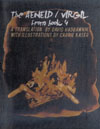
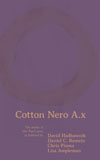
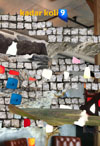
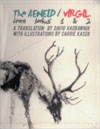
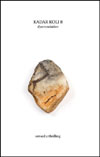
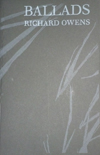
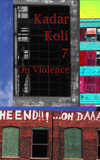
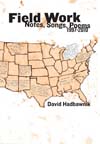
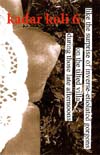
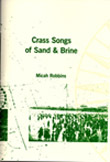

It’s useful to broaden the meaning of “rhyme” to mean more than repetition of particular sounds. Of course, what we are talking about then is architecture, resonance, skeleton. Something has to give a poem / text form that will keep it from being amorphous. It was a slogan of the 70s, 80s, and 90s that “authenticity” gave a poem its structure — as if one could sense such a thing anyway. This seemed to me at the time quite naive, but I heard it very often in workshops I took, and in workshops I taught. When I first taught at Texas State a course on the line in poetry, the idea was radical to the students, most of whom believed line came from impulse. I have seen a growing awareness of and attention to form as a part of what an artist creates. But one still has to allow for the spontaneity of creativity even within this attention. What makes any “rhyme” work is its sudden rightness (to use Stevens’ term): when sound and word and image come together and push our insights past intellect to that eternal (hmmm) space of wholeness, form disappears — not because it isn’t there, but because it is so there that we forget it.
A recent grad student (who also writes poetry) argued in her thesis that Creeley was trying to create a structure that imitated the movement of perception. In other words, the rhyme of the mind at work.
David, I just wanted to say how much I enjoy (re)reading this form-and-theory writings of yours. I (am) learn(ing) a lot about poetry from you and all the discussions on here, and for that I’m grateful.
steve–
i remember you mentioning that–the phenomenology thesis, right?–interesting idea. i think i recall being fairly annoyed with bogan’s essay because she takes so little account of all these different kinds of “rhyme.” but i wasn’t willing to read it again to find out.
what’s the difference between authenticity and impulse? i’m not sure what those words mean in this context. authenticity = “real” speech patterns and breaks in speech? impulse = spontaneity on some personal level?
tina — yr welcome. yr a poet and didn’t know it…
I’ve never really understood the vehement sort of poet-rage against rhyme– sound rhyme specifically. Of course, there are many types of rhyme, and I enjoy a lot of them, but frankly, sound is interesting, it’s fun, and its physical. What’s wrong with that?
There’s tons of labored rhyming poetry out there, but the truth is that there’s just as much (or more, frankly) terribly trite and uninspired free verse going on as well. Stuff that has absolutely no verbal tension going on. A poem that works aurally is a fascinating experience.
Rhyme’s a great tool, just like any other type of sound syncopation. Of course, there are times when rhyme simply happens organically, as an earlier poster mentioned, and that’s a wonderful thing, but why not use it consciously as well? So many of us love reading poets who rhyme– is there music/modeling somehow negated because we live in a different era?
I dunno. I love rhyme. It’s fun, and it’s challenging to do well. It’s often __very__ challenging to poets writing now, but I think that’s because, in large part, many of them haven’t developed that muscle- thus, early attempts suck. I have, though, never really understood new formalists, who somehow think poetry is only real when rhymed– as if rhythm and structure couldn’t be created other ways.
All of this makes me think of well done rap, which is fantastically complicated verbally– the rhythms fly around, the rhyme is amazing, they twist pronunciation around. It can be a joy to listen to.
Anyways, David– I thought your thinking was interesting here, but I felt you were still somehow apologizing for sound rhyme in “poetry.” Am I misreading you? It still feels like you think the place for that is really only when accompanied with music.
Steve–where’ve you been! Anyway, great to hear from you. Let’s e-mail and catch up…
I have nothing against sound-rhyme; as my previous post implied, my problem was more with Bogan. But it’s late, we just started school today, and I don’t feel like digging her up to find out why exactly. Maybe it was something I ate.
I think one of the main points I was trying to make in my original post (which was a short “response essay” for my form n theory class originally, thus not entirely formal or developed), was that the job of end-rhyming has sort of been out-sourced from poetry to music (meaning song lyrics, of course, which would include rap). For a variety of reasons, including but not limited to the conception of poetry as something on the page, rather than recited orally.
Another point–as you and the other Steve have noted–is that there are many kinds of rhyming… And as you note, one result of increasing exploration of those other kinds has been a sharp decline in those sound-rhyme muscles, among all but the most accomplished slam-type poets, mostly…
“Authenticity” seems to imply unfettered, pure, accurate, individual. “Impulse”. . . . I am reminded of Pavlov’s dog. One can shape impulses via education and reward / punishment.